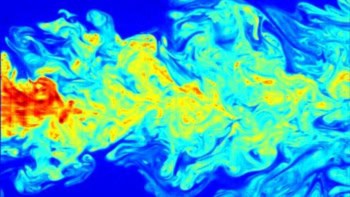World record times in athletics and swimming follow power laws similar to those found in physics according to a recent paper in Nature. Sandra Savaglio of the Space Telescope Science Institute in the US and Vincenzo Carbone, a physicist at the University of Calabria in Italy, analyzed world record times for men and women for distances between 200 metres and the marathon (just over 26 miles or 42 kilometres) in athletics, and between 50 metres and 1500 metres in swimming. In all cases they found that when the average speed was plotted as a function of the record time, the data could be described by power laws. However, the exponent in the power law depended on whether the race was short or long (Nature 404 244).
For ‘short’ races the average speed of a world-record performance declines sharply with increasing distance. However, above a certain distance, the decline is more gentle. For both running and swimming the change in exponent occurs between about 150 and 170 seconds. This corresponds to a change from ‘anaerobic’ respiration – in which the body predominately releases energy without burning oxygen – to aerobic respiration, which is more suited to longer distance running. The transition occurs after a distance of about 1 kilometre for athletes and after 300 or so metres for swimmers. They also discovered that the average speeds of men and women decline at a similar rate – disproving the common belief that women are better suited to long-distance races than men.
“I was training in Munich for a swimming competition for people working in high-energy physics,” says Savaglio, “where we timed our average speed for set distances and I noticed that they seem to follow a predictable power law. Carbone suggested that we should write it up for Nature, so we did.” The research seemed to pay off: “Our team won that year,” she says.
The power law could be used to find the best distance for a particular athlete to compete in suggests Savaglio. “Say a young person wants to train as a athlete,” she says. “A coach could measure his or her average speed at set distances, work out the power law and compare it with that of professional athletes to find the best running distance.”
However, the current graphs are limited by the distances used in competitive athletics, “I would love to have additional data points at 600 and 2500 metres to confirm our findings,” she says. Savaglio and Carbone now plan to see if their approach works for horses.



